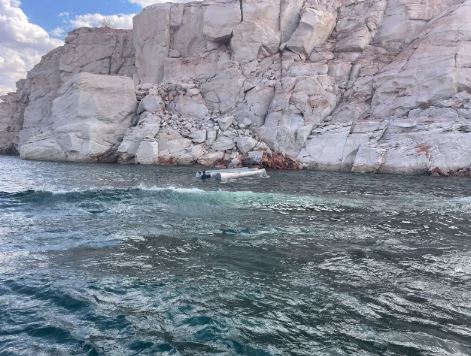
On Saturday, June 21, 2025, Lake Tahoe witnessed a tragic boating accident that claimed six lives and left two others missing. A 27-foot Chris-Craft boat capsized near D.L. Bliss State Park during a sudden and violent storm, which caught many boaters off guard. The vessel, carrying 10 people, encountered extreme weather conditions resulting in its flipping amid 8-foot swells and winds gusting up to 35 mph.
What Caused the Lake Tahoe Boat Capsizing?
The primary cause of the accident was the sudden and unprecedented weather changes on Lake Tahoe, a region known for its tranquil yet unpredictable conditions. The large swells and gale-force winds overwhelmed the boat, even though it was designed for performance and stability.
Experts speculate that a convergence of atmospheric and temperature factors rapidly generated this storm, leaving boaters with little to no warning. The steep underwater drop-off near Rooster Rock further exacerbated the challenges faced by those on the boat.
Lake Tahoe Storm Details
The Sudden Onset of the Storm
Weather forecasts indicated mild conditions earlier in the day, which might have encouraged many recreational boaters to take to the water. However, around 3 p.m., a fast-moving system swept through the area, bringing heavy winds, snow flurries, and dramatically lowering temperatures in mere minutes.
Impact on the Community
The storm caused widespread damage, sinking multiple boats and causing dozens of others to wash ashore or be heavily battered. Camp Richardson Marina reported several vessels breaking from docks, while environmental teams worked to contain minor petroleum leaks to prevent contamination of Lake Tahoe’s pristine waters.
Rescue Efforts and Emergency Response
The emergency response to the accident involved coordinated efforts from local, state, and federal agencies. Highlights include:
- Search Radius: Crews searched over 390 square miles of Lake Tahoe using helicopters, sonar equipment, and rescue boats.
- Rescue Successes: Two people were pulled from the freezing water and rushed to the hospital with hypothermia and other injuries.
- Challenges Faced: Extremely rough waters and deteriorating weather conditions made search operations difficult.
Despite their best attempts, rescuers were forced to suspend the search for the two missing individuals, leaving the local community mourning the loss.
How to Stay Safe During Sudden Weather Changes on Lake Tahoe
Boating in areas like Lake Tahoe requires extra caution due to the unpredictability of mountain weather conditions. Below are safety tips for a safer boating experience:
1. Monitor Weather Patterns Closely
Always check detailed weather forecasts before heading out. Services like AccuWeather or the National Weather Service provide reliable updates. Keep an eye out for high wind warnings or unexpected temperature drops.
2. Equip Boats with Safety Gear
- Carry enough life jackets for every passenger on board.
- Equip your boat with a functioning VHF radio, flares, and a whistle.
- Ensure navigation lights and a GPS are operational.
3. Understand Local Risks
Familiarize yourself with Lake Tahoe’s unique geography, such as underwater drop-offs and areas prone to strong winds like Emerald Bay. Avoid overloading boats, as this can significantly impact their stability in rough waters.
4. Be Prepared for Emergencies
Practice ‘man overboard’ drills and ensure everyone onboard knows how to respond if someone falls into the water. Pack thermal blankets and emergency supplies for colder conditions.
Frequently Asked Questions
Why is Lake Tahoe’s weather so unpredictable?
Lake Tahoe’s high altitude and mountain surroundings make its weather conditions highly variable. Rapid atmospheric pressure changes can result in sudden storms.
What should you do if caught in a storm while boating?
If you notice worsening weather, head back to the dock immediately. Stay calm, reduce speed, keep the bow (front) of the boat facing into the waves, and ensure everyone wears a life jacket.
Is it safe to boat on Lake Tahoe after this incident?
While the accident highlights certain risks, boating on Lake Tahoe is generally safe when precautions are taken, such as heeding weather warnings and using appropriate safety equipment.
Final Thoughts
The Lake Tahoe boat accident serves as a stark reminder of the power of nature and the importance of preparation. By understanding the risks and following safety measures, we can enjoy the beauty of boating while minimizing dangers.
For further information on boating safety, visit websites like the U.S. Coast Guard Boating Safety Division or the National Park Service Boating Safety Page.
 GDW Media
GDW Media


